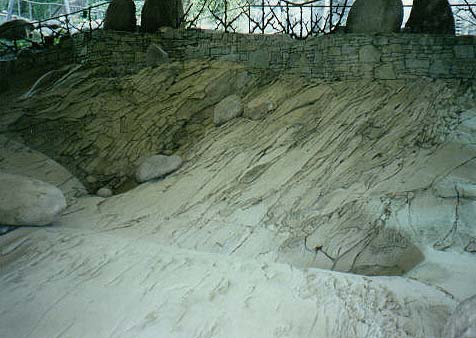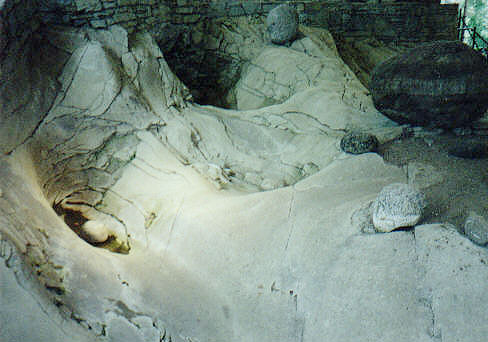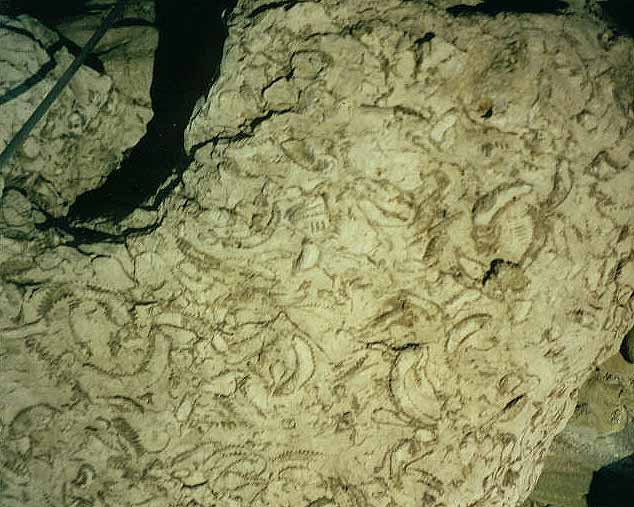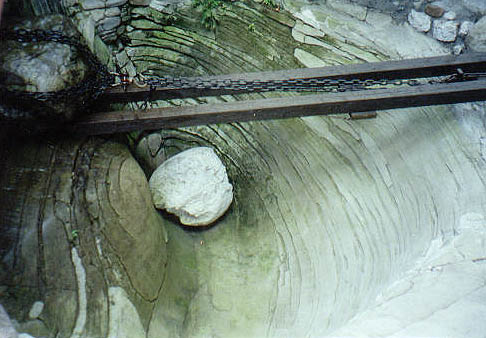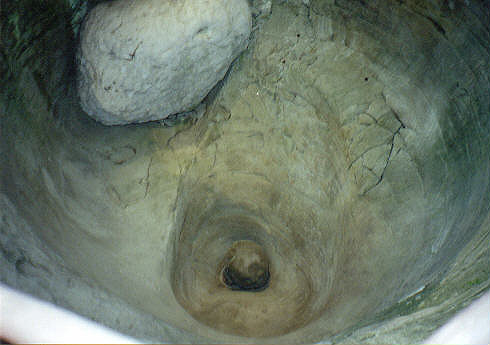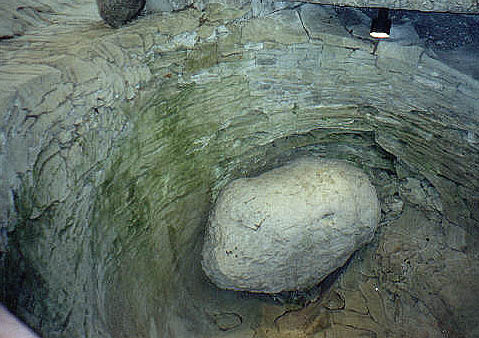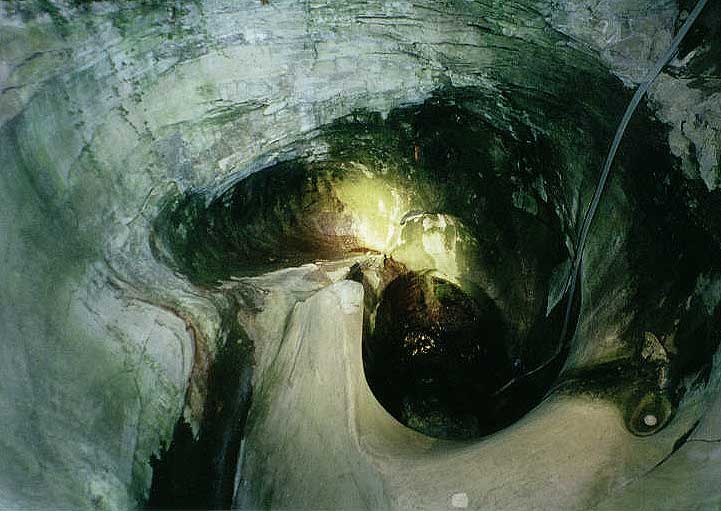| Glacier Garden, Luzern |

The site was discovered in 1872 by Joseph Wilhelm Amrein-Troller. He purchased land around a rock quarry just outside of the urban area of Luzern, next to the Lion Monument. He intended to excavate a wine cellar in the sandstone to help expand his spare-time occupation as a wine trader. During the first excavations, a small pothole was found on November 2, 1872. Two geologists, Franz Joseph Kaufmann and Albert Heim, recognized the potholes as evidence of the ice age and convinced Amrein-Troller to stop blasting operations and preserve the site. The Glacier Garden was inaugurated on May 1, 1873.
In this picture, you can see how the glacier movement turned the sandstone into a smooth surface. There's also a very small depression on the left, which was the start of a pothole.

